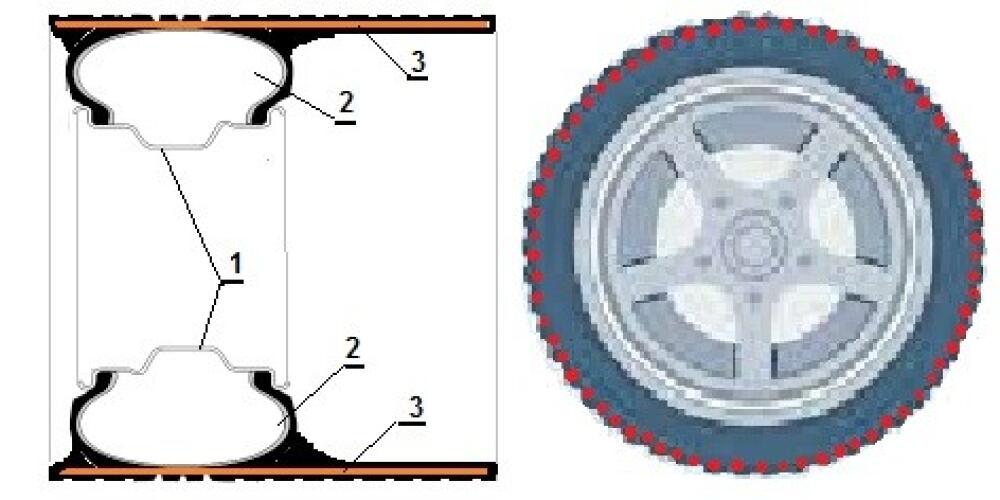
Car tires carry a car. They are made by inflating them with air to be elastic enough to cushion the impact of a car crossing over bumps. In order to be able to carry a car they must be inflated to a certain pressure. However, when driving over soft terrain, this pressure must be reduced in order to increase the contact area between the ground and the rubber, thus reducing the ground pressure. In such a case, the car must move more slowly so that the tire does not puncture when the tire passes over a smaller, harder protrusion or hole.
This reduction in tire pressure can ensure that you drive over shallower ground, but when the ground is soft, the car can fall too deep into the ground, making it impossible to drive. In order to solve this problem, the surface of the tube needs to be further increased. This can be achieved by increasing the width of there rubber.
The expansion of the rubber tube is shown in the figure above. This type of tire (2) is placed on the rim (1) just like any other tube. This rubber (2) has steel bars (3) installed in its outer profile along the entire circumference. These steel bars (3) extend the surface of the tires (2) two to three times. This increases the contact area between the ground and the tire (2) by two to three times. Thanks to this, a car with such tires (2) can drive on deeper snow and deeper mud.
These expanded tube tires could be most useful on all-wheel drive off-road vehicles.
The only drawback of such tube tires could be the reduction of the steering angle, because the extended tires could get stuck on the fenders of the car at a full angle of rotation of the front wheels in corners. Because of that, you should drive more slowly on deep snow and deep mud, and turn slightly in bends.
Tags
Featured articles